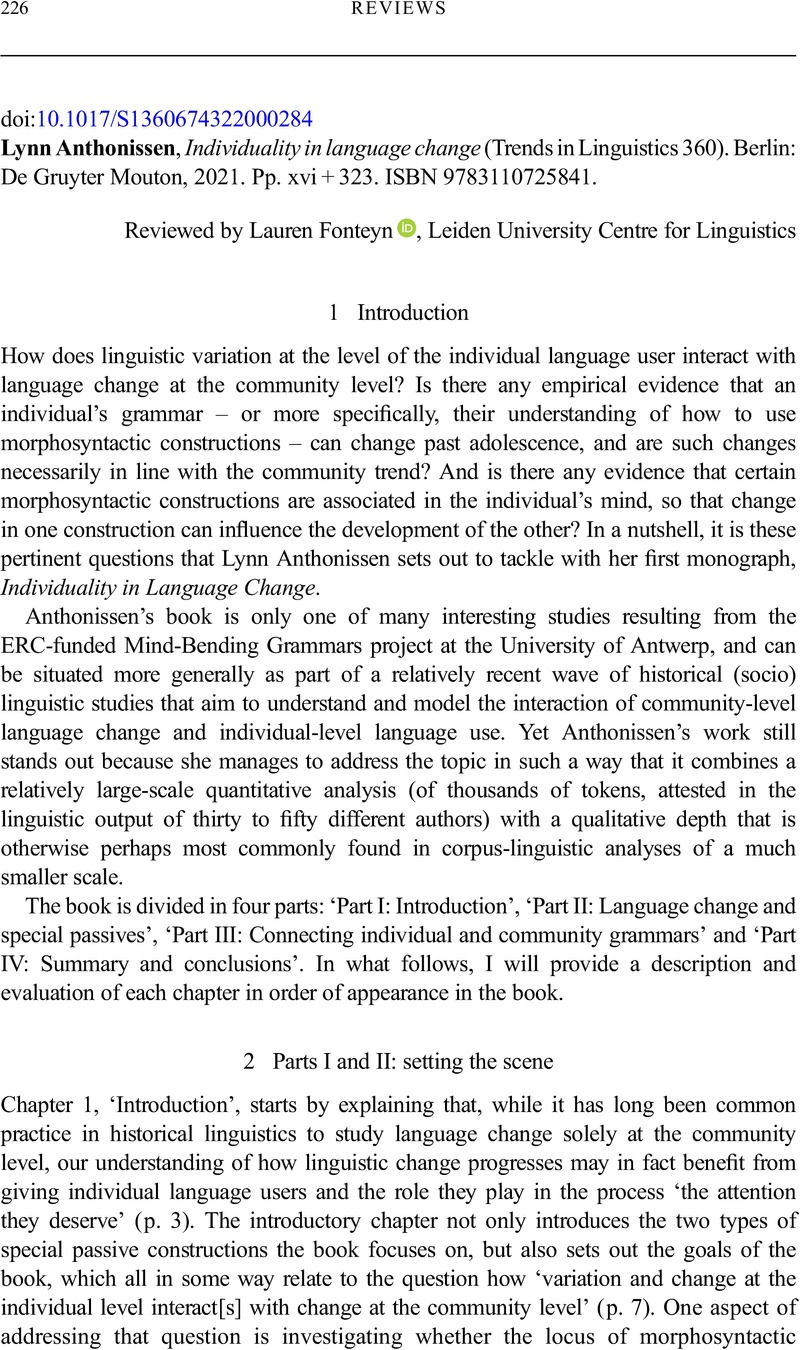No CrossRef data available.
Article contents
Lynn Anthonissen, Individuality in language change (Trends in Linguistics 360). Berlin: De Gruyter Mouton, 2021. Pp. xvi + 323. ISBN 9783110725841.
Review products
Lynn Anthonissen, Individuality in language change (Trends in Linguistics 360). Berlin: De Gruyter Mouton, 2021. Pp. xvi + 323. ISBN 9783110725841.
Published online by Cambridge University Press: 22 September 2022
Abstract
An abstract is not available for this content so a preview has been provided. Please use the Get access link above for information on how to access this content.

- Type
- Book Review
- Information
- Copyright
- Copyright © The Author, 2022. Published by Cambridge University Press
References
Baxter, Gareth & Croft, William. 2016. Modeling language change across the lifespan: Individual trajectories in community change. Language Variation and Change 28(2), 129–73.CrossRefGoogle Scholar
Fonteyn, Lauren & Petré, Peter. 2022. On the probability and direction of morphosyntactic lifespan change. Language Variation and Change 34(1), 79–105.CrossRefGoogle Scholar
Labov, William. 2006. The social stratification of English in New York City, 2nd edn. Cambridge: Cambridge University Press.CrossRefGoogle Scholar
Labov, William. 2012. What is to be learned: The community as the focus of social cognition. Review of Cognitive Linguistics 10(2), 265–93.CrossRefGoogle Scholar
Meisel, Jürgen, Elsig, Martin & Rinke, Esther. 2013. Language acquisition and change: A morphosyntactic perspective. Edinburgh: Edinburgh University PressGoogle Scholar
Noël, Dirk. 2008. The nominative and infinitive in Late Modern English: A diachronic constructionist approach. Journal of English Linguistics 36(4), 314–40.CrossRefGoogle Scholar
Petré, Peter, Anthonissen, Lynn, Budts, Sara, Manjavacas, Enrique, Silva, Emma-Louise, Standing, William & Strik, Odile A. O.. 2019. Early Modern Multiloquent Authors (EMMA): Designing a large-scale corpus of individuals’ languages. ICAME Journal 43, 83–122.CrossRefGoogle Scholar
Schmid, Hans-Jörg. 2020. The dynamics of the linguistic system: Usage, conventionalization, and entrenchment. Oxford: Oxford University Press.CrossRefGoogle Scholar



